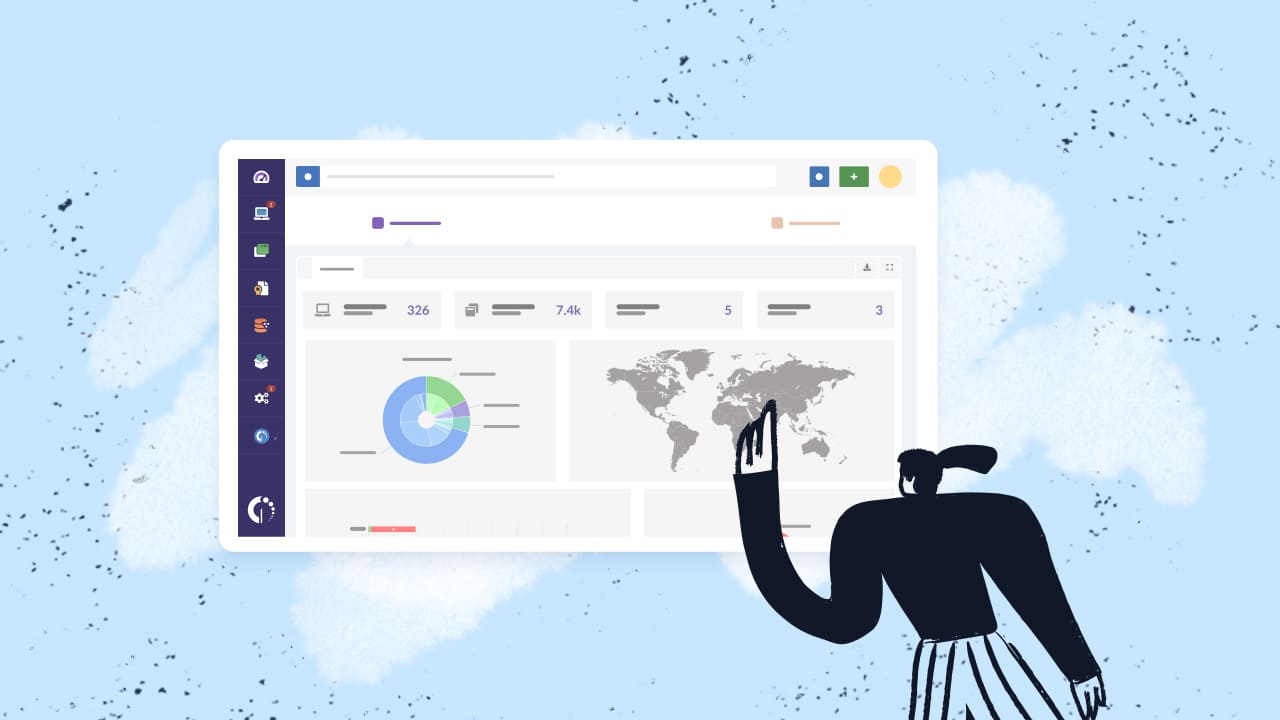Managing software contracts is a critical part of any IT or business operation. Whether you’re an enterprise purchasing license for software or a small company seeking a SaaS (Software as a Service) solution, understanding how software contracts work can save your organization a lot of time and resources.
From key elements and types to effective negotiation strategies and the cancellation process, having a strong grasp of this topic will help you make informed decisions and avoid unnecessary complications. This article provides a step-by-step look at what makes up a software contract and tips for handling the associated challenges.
Let’s start by breaking down what software contracts are and why they’re important.
What is a software contract?
A software contract is a legal agreement between two parties: the software provider (vendor) and the user (individual or organization). It outlines the terms of use, pricing, delivery, support, and any other specific rights and responsibilities each party must adhere to. The scope of the agreement can range from simple licenses for individual users to complex contracts for enterprise-level software solutions.
These contracts define how the software will be used, who owns the intellectual property, and the consequences of violating any terms. Without a well-defined software contract, misunderstandings between vendor and customer can arise, leading to disputes that may impact operations.

10 key elements of software contracts
Now that we have learned the basics, let's review the components of every software contract. It’s crucial to understand them clearly before signing anything. Here are the main elements:
1. License terms
First, we have license terms. They specify how the software can be used. For example, the contract might outline whether it is for single-use, multiple users, or enterprise-wide usage. Additionally, the license often defines whether it is perpetual (you buy the right to use the software indefinitely) or subscription-based (you pay recurring fees for continued access).
2. Pricing and payment schedule
Second, we have the financial structure of the contract is key to your budgeting process. The pricing can be structured as a one-time fee or upfront payments, an ongoing subscription. Be mindful of potential hidden costs, such as support, upgrades, or additional users.
3. Support and maintenance
Most software contracts provide details on what level of customer support you can expect. This includes the scope and type of support (e.g., email, phone, live chat), response times, and any extra costs associated with premium support.
4. Limitation of liability
One of the critical clauses in software contracts is the limitation of liability. This clause defines the extent to which the software vendor will be held accountable for any damages that arise from using their product. It usually sets a cap on the maximum amount the vendor would be liable for, such as the total amount paid under the contract.
For example, if a software malfunction leads to business downtime or data loss, the limitation of liability clause may restrict the vendor’s financial responsibility to the contract's total value. It’s essential to review this clause carefully, as it could significantly affect your organization's ability to recover losses. Given the complexity of liability clauses, many organizations now use AI contract analysis tools to identify risky provisions that could impact their recovery rights.
5. Renewal and termination clauses
The contract should clearly state the renewal process. Is it automatic, or does it require manual renewal? Knowing this will help you avoid getting locked into unwanted renewals. Likewise, termination clauses should explain how to cancel the contract and what penalties or conditions apply.
6. Intellectual property rights
This section defines the ownership of the software. In most cases, you don’t own the software but are granted the right to use it under specific conditions. It also clarifies whether you have any rights to modify, resell, or distribute the software.
7. Data protection and security
Security has become a major concern in software agreements, particularly as data breaches and cyberattacks continue to rise. A well-structured software contract must clearly define the security measures the vendor will use to protect your data, as well as how they will respond to security incidents. This section should include encryption protocols, backup procedures, and access controls, along with how the vendor’s approach aligns with modern frameworks such as an SSE solution to ensure unified protection across cloud applications.
Additionally, the contract should outline the vendor’s responsibilities in case of a data breach, including notification timelines, remediation steps, and potential compensation. Pay attention to clauses concerning data encryption and breach notifications.
8. Compliance with legal standards and regulations
Ensuring that the software and its usage comply with legal standards is a key part of any contract. These compliance clauses outline the responsibility of both the vendor and the customer to adhere to relevant laws, regulations, and industry standards. For instance, if your business operates in sectors governed by strict privacy laws like the GDPR, your contract should include explicit clauses regarding data handling, storage, and transfer.
Failure to comply with these legal requirements can result in hefty fines or reputational damage. It's vital that your contract reflects these needs and that both parties understand their obligations.
9. Third-party software and integration
Many software solutions rely on third-party integrations or plugins to offer full functionality. A software contract must clearly specify how these third-party tools are handled. This includes outlining who is responsible for maintaining those integrations, what support is available if an integration fails, and how updates to third-party software will be managed.
10. Service-level agreements (SLAs)
Lastly, SLAs set expectations for performance, availability, and uptime. For example, a SaaS provider might guarantee 99.9% uptime. If these standards aren’t met, the SLA may offer recourse, such as service credits or refunds.
Understanding the SLA in your software contract is critical, as it directly impacts how efficiently you can use the software and resolve issues. Be sure to review the terms carefully, including penalties for not meeting the SLA, such as credits or refunds. Regularly monitor these performance indicators to ensure the vendor is delivering as promised.

Types of software contracts
Not all software contracts are the same, and different types offer different advantages depending on your organization’s needs.
Here are five common types:
- Perpetual license agreements: In this model, the customer pays a one-time fee to use the software indefinitely. These contracts are often used for on-premise software, where you retain control of installation and updates. While you don’t pay ongoing fees, support may require additional costs.
- Subscription agreements: This type of contract is based on recurring payments (monthly or annually) for continued access to the software. SaaS applications are typically delivered under this model. The subscription often includes support, updates, and cloud hosting as part of the package.
- End-user license agreements (EULAs): EULAs are typically consumer-focused agreements governing individual software use. These contracts limit how the software can be used and prohibit things like reverse-engineering the code or sharing licenses.
- Enterprise agreements: Large organizations often negotiate custom contracts that offer bulk discounts, priority support, and access to multiple products under a single license. These agreements can include flexible terms tailored to the specific needs of the enterprise.
- Maintenance and support contracts: Separate from the licensing agreement, these contracts cover ongoing software maintenance and support. They may outline the process for receiving updates and technical assistance and can also include provisions for on-site support or dedicated account managers.
Basics of software Contract Management

Managing software contracts effectively can save time and prevent unnecessary expenses. Here are a few tips to keep things organized:
- Keep documentation accessible: Maintain copies of all contracts, amendments, and correspondence in one place. This ensures you have all necessary records during audits or disputes.
- Set deadline alerts: Use contract management tools to alert you of upcoming renewals, payment deadlines, or termination notice periods.
- Regularly review contracts: Make it a habit to review contracts periodically, ensuring that the terms still align with your organization’s needs.
- Monitor compliance: Check that your software usage doesn’t exceed the agreed-upon terms to avoid breach penalties.
Do you want to streamline this process? You can use InvGate Asset Management to manage all your software contracts with centralized processes for easy access, tracking, and renewal. It helps organize your contracts efficiently and centralize all their details!

Role of the contract owner
The contract owner is typically a department head, IT manager, or procurement officer responsible for managing the software contract lifecycle. Their duties include:
- Managing renewals: Keeping track of renewal dates to avoid missed deadlines.
- Monitoring usage: Ensuring the organization uses the software according to the terms.
- Handling disputes: Addressing any issues that arise during the contract term, such as service delivery or support complaints.
How to negotiate a Software Contract
Effective negotiation can help your organization get the most out of a software contract. Here are some tips to keep in mind:
- Know your requirements: Before negotiating, clearly define what your organization needs from the software. This includes user limits, feature access, and support levels. By understanding your requirements, you can focus negotiations on what matters most, avoiding unnecessary costs.
- Ask for flexible terms: Vendors may offer more flexibility than what’s initially presented. Whether it’s pricing, user counts, or service levels, ask for contract terms that better suit your organization's goals. For instance, request a clause that allows you to add or remove users easily without penalty.
- Understand the renewal terms: Automatic renewals can lead to unexpected expenses if you’re not careful. Negotiate a contract that gives you a notification window before renewal and allows you to opt out without fees.
- Negotiate support levels: If the software is critical to your operations, the standard support package might not be sufficient. Ask for more responsive support at no extra cost, or inquire about discounted premium packages.
- Get everything in writing: This may seem obvious, but it's always good to remember that verbal agreements don’t hold up in legal disputes. Make sure all negotiated terms are included in the final written contract to avoid any misunderstandings.
Cancelling a software contract: what to consider
Ending a software contract might seem straightforward, but it’s important to follow the cancellation process carefully to avoid penalties or service disruptions.
- Review the termination clause: Check the contract for any conditions or fees associated with early termination.
- Notify the vendor in advance: Most contracts require formal written notice a specific number of days before the termination date. Missing this deadline could result in automatic renewal or penalty fees.
- Plan for data retrieval: If you’re using a cloud-based service, ensure you retrieve all necessary data before the contract ends. Ask the vendor about their data deletion policies.
- Confirm all costs: Verify if there are any outstanding payments or early termination fees. If possible, try to negotiate for a reduced penalty.
Final words
Managing software contracts doesn't have to be complicated. With a clear understanding of the contract elements, a solid approach to negotiation, and careful attention to contract management basics, your organization can minimize risks and maximize the value of its software investments.
Good contract management practices, including keeping documentation accessible, setting reminders for deadlines, and staying compliant with legal standards, are essential for long-term success.
Ultimately, taking the time to review and organize your contracts will help you avoid costly mistakes in the future.















